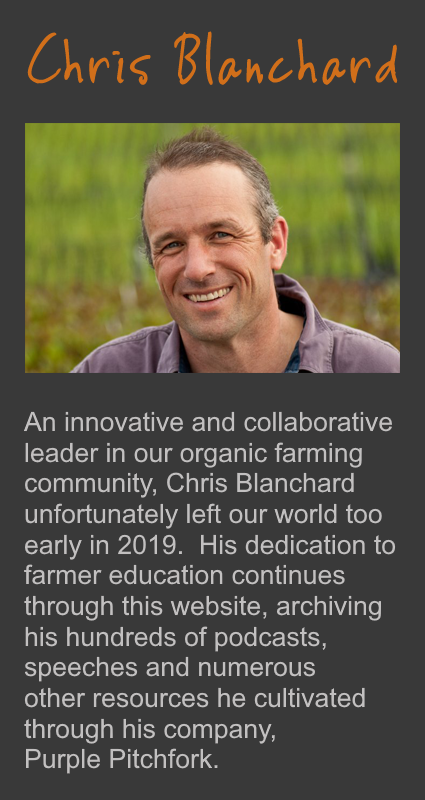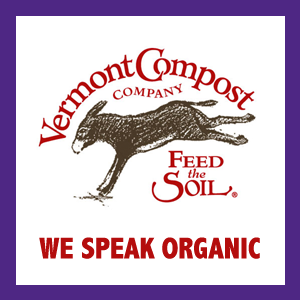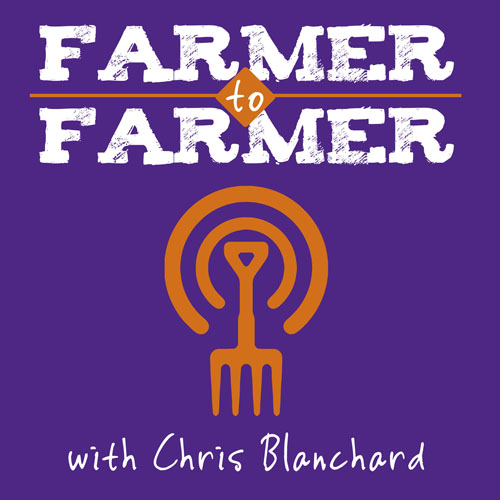The comment period for the revised proposed Produce Rule for the Food Safety Modernization Act closes Monday, December 15. And the FDA needs to hear from you.
The good news? The National Sustainable Agriculture Coalition has made it ridiculously straightforward to comment on the rule. They have a complete guide to the process, and even a Word document template that you can use to guide your comments. Everything you need is right here: sustainableagriculture.net/fsma/speak-out-today/
The other piece of good news? The voices of farmers and farm supporters made a huge difference during the original comment period – enough so that the FDA took the relatively rare step of making major revisions to their proposal and then re-opening the comment period. We need to make a similar impression this time around – the new proposal is a substantial improvement over the previous proposal, but it still has some serious flaws.
If you raise fresh produce, think you might want to raise fresh produce in the future, or just want access to locally grown fresh produce from real family farms, it is imperative that you take the time to comment on the rule. We’re going to have to live with these regulations for decades to come – the last major revision to the nation’s food safety regulations was in 1938 – so go now to sustainableagriculture.net/fsma/speak-out-today/ and use their great information and tools to make your comments.
There are plenty of issues to address in the proposed Produce Rule, but here are my top four:
Farms should be defined by their activities, not by ownership or geography.
The proposed definition of a farm – which keeps an operation or activity from being regulated under the far-more-stringent rules for processing – should be based on common sense and risk-based distinctions.
The current proposal would define a farm as being under “one ownership” and in “one general physical location.” This lacks clarity and common sense – my own farm utilized two different parcels more than three miles apart, but that certainly did not increase my food safety risk. Neither does owning the property where you grow your produce while leasing a packing shed on a different piece of property nearby.
These are not the science-based regulations that congress called for when it passed the Food Safety Modernization Act. Farms come in all different shapes and sizes and all kinds of ownership structures; the Food Safety Modernization Act needs to accommodate the creativity that farmers use in meeting their resource needs. Anything less threatens the survival of current operations, and creates tremendous barriers to entry for beginning farmers.
Farm activities are farm activities, regardless of where they happen,
The proposed rule regulates the same activity differently depending on where it happens. If you wash your produce, trim outer leaves, or put stickers on your watermelons on your farm, that’s considered to be “farming.” If you do the same activities on your neighbor’s farm, that’s also considered to be farming. But if you wash your produce in a packing house that isn’t on a farm, that’s considered to be processing or manufacturing, and falls under additional regulations.
If washing produce doesn’t present a public health risk when it’s done on a farm, there’s no reason that it should present a public health risk when it’s done off the farm. This rule would stand in the way of the development of multi-farm CSAs, food hubs, and even farmers markets.
Testing surface water isn’t necessarily connected to safety.
The FDA has backed off of the crazy requirements for water testing that were present in the original proposal, but they are still asking farmers to test surface water 20 times per year to establish a baseline risk threshold.
Tests would indicate how long farmers need to wait between applying overhead irrigation and harvesting produce, based on… well, here’s what the FDA has to say:
For example, if you determined (using the procedures described in proposed §§ 112.45(b) or 112.45(c), as applicable), that your agricultural water which is to be used for the purposes described in § 112.44(c) has generic E. coli levels with a GM value of 241 CFU per 100 mL and a STV value of 576 CFU per 100 mL, your water would not meet the microbial quality specified in § 112.44(c), in that your values exceed both the GM value of 126 CFU per 100 mL and STV value of 410 CFU or less per 100 mL. Under proposed § 112.44(c)(1), you would be able to use this water by applying a calculated time interval of 1 day between your last irrigation event (by direct application method) and harvest of the crop. Using a microbial reduction rate of 0.5 log per day, a 1-day time interval would be sufficient to meet the microbial quality requirements specified in § 112.44(c) because it would reduce your GM and STV values to 76 CFU per 100 mL and 182 CFU per 100 mL, respectively.
Do you really want to try to figure that out in August?
Instead, FDA should implement the common-sense solution used by growers and recommended by Cornell University – a several day wait between overhead irrigation and harvest, or cleaning crops with water treated with a wash-water sanitizer, multiple fresh water rinses, or a flowing rinse. The science backs this up, and it’s an easily implemented solution.
Not regulating raw manure use right now is just crazy.
The FDA has proposed to delay the creation of a new standard for raw manure management. This makes sense – I’ve reviewed the research and it is not clear what the appropriate pre-harvest application interval would be. But the research is clear on one thing – the organic standard for raw manure application makes sense. Let’s go with the very workable, very safe 120-day waiting period if the edible portion is in contact with the ground, and 90 days if it isn’t.
Now, go.
Seriously. This is important. Go right now to sustainableagriculture.net/fsma/speak-out-today/ and follow their easy instructions.
The good news? The National Sustainable Agriculture Coalition has made it ridiculously straightforward to comment on the rule. They have a complete guide to the process, and even a Word document template that you can use to guide your comments. Everything you need is right here: sustainableagriculture.net/fsma/speak-out-today/
The other piece of good news? The voices of farmers and farm supporters made a huge difference during the original comment period – enough so that the FDA took the relatively rare step of making major revisions to their proposal and then re-opening the comment period. We need to make a similar impression this time around – the new proposal is a substantial improvement over the previous proposal, but it still has some serious flaws.
If you raise fresh produce, think you might want to raise fresh produce in the future, or just want access to locally grown fresh produce from real family farms, it is imperative that you take the time to comment on the rule. We’re going to have to live with these regulations for decades to come – the last major revision to the nation’s food safety regulations was in 1938 – so go now to sustainableagriculture.net/fsma/speak-out-today/ and use their great information and tools to make your comments.
There are plenty of issues to address in the proposed Produce Rule, but here are my top four:
Farms should be defined by their activities, not by ownership or geography.
The proposed definition of a farm – which keeps an operation or activity from being regulated under the far-more-stringent rules for processing – should be based on common sense and risk-based distinctions.
The current proposal would define a farm as being under “one ownership” and in “one general physical location.” This lacks clarity and common sense – my own farm utilized two different parcels more than three miles apart, but that certainly did not increase my food safety risk. Neither does owning the property where you grow your produce while leasing a packing shed on a different piece of property nearby.
These are not the science-based regulations that congress called for when it passed the Food Safety Modernization Act. Farms come in all different shapes and sizes and all kinds of ownership structures; the Food Safety Modernization Act needs to accommodate the creativity that farmers use in meeting their resource needs. Anything less threatens the survival of current operations, and creates tremendous barriers to entry for beginning farmers.
Farm activities are farm activities, regardless of where they happen,
The proposed rule regulates the same activity differently depending on where it happens. If you wash your produce, trim outer leaves, or put stickers on your watermelons on your farm, that’s considered to be “farming.” If you do the same activities on your neighbor’s farm, that’s also considered to be farming. But if you wash your produce in a packing house that isn’t on a farm, that’s considered to be processing or manufacturing, and falls under additional regulations.
If washing produce doesn’t present a public health risk when it’s done on a farm, there’s no reason that it should present a public health risk when it’s done off the farm. This rule would stand in the way of the development of multi-farm CSAs, food hubs, and even farmers markets.
Testing surface water isn’t necessarily connected to safety.
The FDA has backed off of the crazy requirements for water testing that were present in the original proposal, but they are still asking farmers to test surface water 20 times per year to establish a baseline risk threshold.
Tests would indicate how long farmers need to wait between applying overhead irrigation and harvesting produce, based on… well, here’s what the FDA has to say:
For example, if you determined (using the procedures described in proposed §§ 112.45(b) or 112.45(c), as applicable), that your agricultural water which is to be used for the purposes described in § 112.44(c) has generic E. coli levels with a GM value of 241 CFU per 100 mL and a STV value of 576 CFU per 100 mL, your water would not meet the microbial quality specified in § 112.44(c), in that your values exceed both the GM value of 126 CFU per 100 mL and STV value of 410 CFU or less per 100 mL. Under proposed § 112.44(c)(1), you would be able to use this water by applying a calculated time interval of 1 day between your last irrigation event (by direct application method) and harvest of the crop. Using a microbial reduction rate of 0.5 log per day, a 1-day time interval would be sufficient to meet the microbial quality requirements specified in § 112.44(c) because it would reduce your GM and STV values to 76 CFU per 100 mL and 182 CFU per 100 mL, respectively.
Do you really want to try to figure that out in August?
Instead, FDA should implement the common-sense solution used by growers and recommended by Cornell University – a several day wait between overhead irrigation and harvest, or cleaning crops with water treated with a wash-water sanitizer, multiple fresh water rinses, or a flowing rinse. The science backs this up, and it’s an easily implemented solution.
Not regulating raw manure use right now is just crazy.
The FDA has proposed to delay the creation of a new standard for raw manure management. This makes sense – I’ve reviewed the research and it is not clear what the appropriate pre-harvest application interval would be. But the research is clear on one thing – the organic standard for raw manure application makes sense. Let’s go with the very workable, very safe 120-day waiting period if the edible portion is in contact with the ground, and 90 days if it isn’t.
Now, go.
Seriously. This is important. Go right now to sustainableagriculture.net/fsma/speak-out-today/ and follow their easy instructions.




 RSS Feed
RSS Feed
